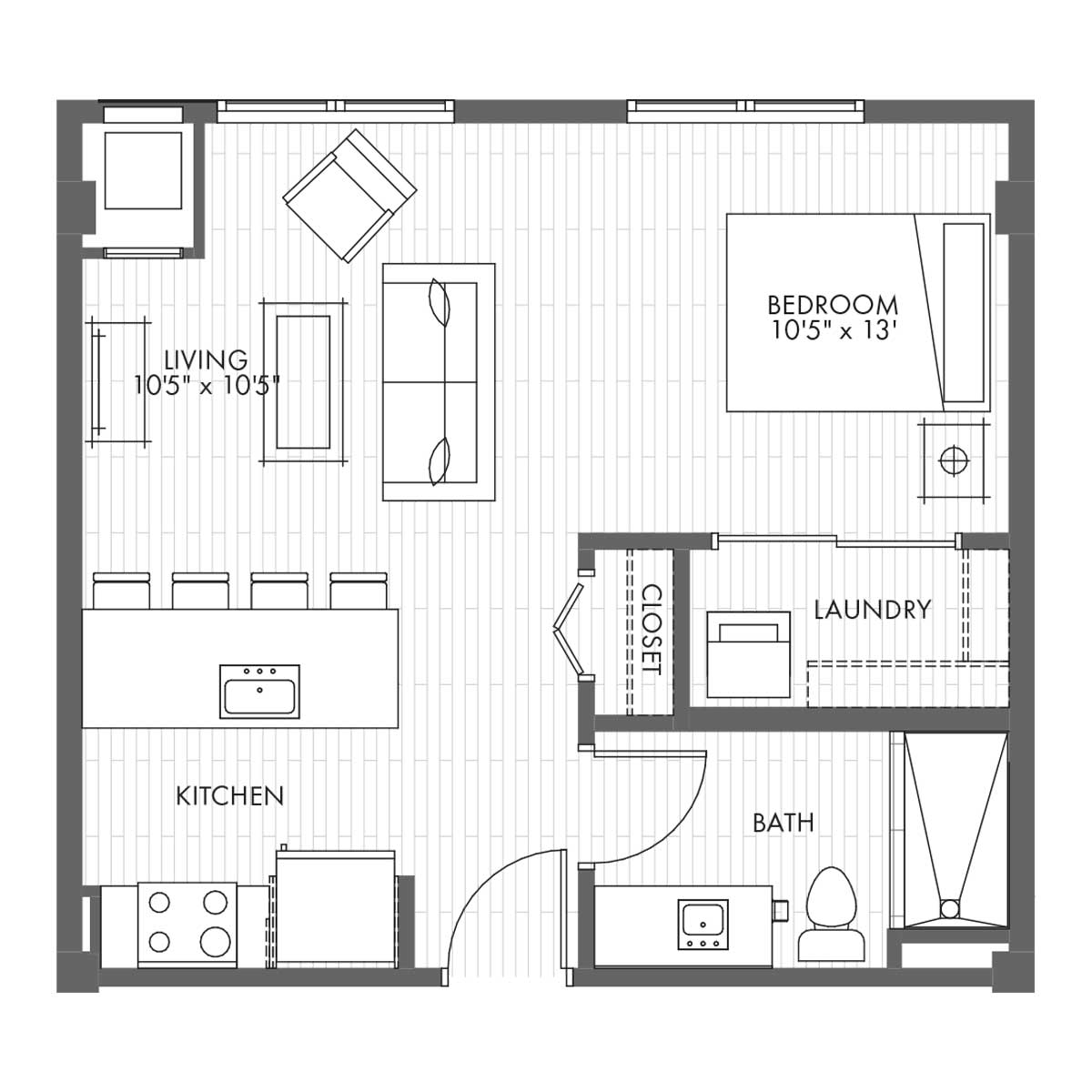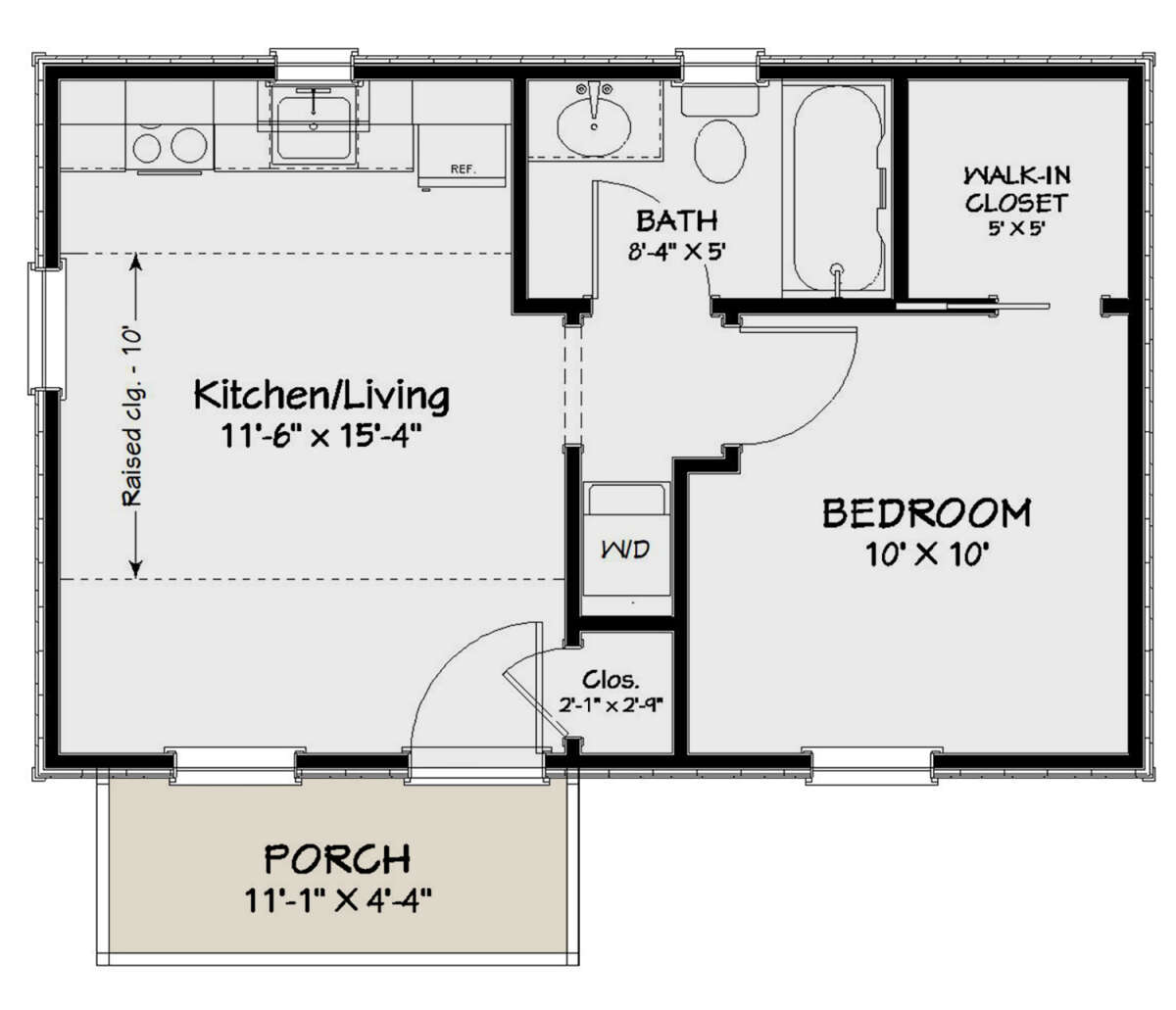Understanding 24×36 1 Bedroom Floor Plans

A 24×36 footprint, offering 864 square feet of living space, presents an intriguing option for a single-bedroom dwelling. This size provides a balance between cozy intimacy and functional living, making it appealing for various lifestyles.
Advantages and Disadvantages of 24×36 Floor Plans
The 24×36 footprint offers a balance between space and functionality. Here are some key advantages and disadvantages:
- Advantages:
- Efficient Space Utilization: The 864 square feet allows for a well-defined layout with dedicated areas for living, sleeping, and dining, without feeling cramped.
- Cost-Effective: Compared to larger homes, a 24×36 footprint can be more cost-effective to build and maintain, making it an attractive option for budget-conscious individuals.
- Flexibility: The size allows for diverse layouts, catering to different preferences and lifestyles, from open-concept designs to traditional layouts.
- Disadvantages:
- Limited Space: While 864 square feet provides enough space for a comfortable single-bedroom dwelling, it may feel restrictive for larger families or those who prefer more expansive living areas.
- Potential for Clutter: With limited space, maintaining an organized environment can be challenging, requiring careful planning and efficient storage solutions.
Examples of Different Layouts
The 24×36 footprint offers versatility in layout design, allowing for various configurations to meet different needs.
- Open-Concept Designs: Open-concept layouts maximize space by merging living, dining, and kitchen areas into a single, expansive space. This design fosters a sense of openness and flow, ideal for social gatherings and entertaining.
- Traditional Layouts: Traditional layouts prioritize defined spaces, with separate areas for living, dining, and sleeping. This arrangement offers privacy and a sense of order, suitable for those who prefer distinct boundaries between rooms.
- Studio-Style Arrangements: Studio-style layouts combine living, sleeping, and cooking areas into a single, multi-functional space. This design is compact and efficient, ideal for individuals or couples who value minimalism and prefer a unified living environment.
Design Considerations for a 24×36 1 Bedroom Floor Plan

Designing a 24×36 1 bedroom floor plan presents a unique opportunity to create a functional and stylish living space within a compact footprint. By prioritizing smart design choices, you can maximize natural light, ventilation, and the overall sense of spaciousness, resulting in a comfortable and inviting home.
Maximizing Natural Light and Ventilation
Adequate natural light and ventilation are crucial for creating a healthy and pleasant living environment. Here are some strategies to maximize these elements in your 24×36 floor plan:
- Large Windows: Incorporate large windows, especially on the south side of the house, to allow maximum sunlight penetration. This will brighten the interior and reduce the need for artificial lighting during the day.
- Skylights: Consider adding skylights to bring natural light into the center of the house, especially in areas like the kitchen or living room.
- Open Floor Plan: An open floor plan allows natural light to flow freely throughout the space, creating a sense of openness and spaciousness.
- Cross Ventilation: Place windows on opposite sides of the house to create cross ventilation, allowing for fresh air circulation.
Creating a Sense of Spaciousness
A 24×36 footprint may seem small, but with strategic design, you can create the illusion of more space. Here are some techniques:
- Light Colors: Using light colors on walls, ceilings, and furniture will reflect light and make the space feel larger.
- Mirrors: Strategically placed mirrors can create the illusion of depth and make the space feel more expansive.
- Minimalist Decor: Avoid cluttering the space with too many furnishings or decorations. A minimalist approach allows for more breathing room and a feeling of openness.
- Multifunctional Furniture: Consider using furniture that serves multiple purposes, such as a sofa bed or a coffee table with storage space, to maximize functionality without compromising on space.
Kitchen and Bathroom Layouts
The kitchen and bathroom are two of the most important spaces in any home. Efficient and functional layouts are essential for maximizing these areas.
Kitchen Layout Options
- Galley Kitchen: A galley kitchen, with cabinets on both sides and a narrow walkway in between, is a space-saving option that can be highly functional.
- L-Shaped Kitchen: An L-shaped kitchen provides more countertop and storage space, while still maintaining a compact footprint.
- U-Shaped Kitchen: A U-shaped kitchen offers the most storage and counter space, but may not be suitable for smaller spaces.
Bathroom Layout Options
- Single-Vanity Bathroom: A single-vanity bathroom is the most common and space-efficient option for a smaller bathroom.
- Shower-Only Bathroom: If space is limited, consider opting for a shower-only bathroom instead of a bathtub. This will free up valuable floor space.
- Separate Shower and Tub: If you have the space, a separate shower and tub can provide both functionality and luxury.
Sample Floor Plan with Furniture Placement, 24×36 1 bedroom floor plans
[Description of a sample floor plan with furniture placement, illustrating how a 24×36 space can be effectively furnished. The description should include details about the placement of furniture, including a bed, sofa, coffee table, dining table, chairs, and other necessary items. The description should also highlight how the floor plan incorporates the design considerations discussed earlier, such as maximizing natural light, ventilation, and creating a sense of spaciousness. ]
Building and Construction Aspects: 24×36 1 Bedroom Floor Plans

Building a 24×36 single-bedroom home presents a range of options in terms of materials, construction techniques, and costs. Understanding these aspects is crucial for making informed decisions about the project.
Common Building Materials and Construction Techniques
The choice of building materials significantly influences the cost, durability, and aesthetic appeal of the home.
Common Building Materials
- Wood Framing: Traditional wood framing remains a popular choice due to its affordability, ease of construction, and versatility.
- Steel Framing: Steel framing offers superior strength, fire resistance, and termite resistance, but it is generally more expensive than wood framing.
- Concrete Block: Concrete blocks provide excellent insulation, soundproofing, and fire resistance, making them suitable for various climates. They are often used for foundations and exterior walls.
- Brick: Brick construction offers durability, aesthetic appeal, and fire resistance, but it can be more expensive than other materials.
Construction Techniques
- Traditional Construction: This method involves building the home on-site using traditional materials and techniques. It offers flexibility in design but can be time-consuming and labor-intensive.
- Modular Construction: Modular homes are built in factory settings and transported to the site for assembly. This method offers faster construction times, consistent quality, and cost savings.
- Prefabricated Construction: Prefabricated homes are constructed in factory settings and delivered to the site as complete units. They offer speed, efficiency, and often come with pre-designed floor plans.
Cost Considerations
The cost of building a 24×36 single-bedroom home varies significantly based on location, materials, finishes, and construction method.
Factors Influencing Costs
- Location: Land prices, labor costs, and building codes vary by location, influencing the overall project cost.
- Materials: The choice of materials, such as wood, steel, concrete, or brick, impacts the cost of construction.
- Finishes: Interior and exterior finishes, including flooring, countertops, paint, and fixtures, contribute to the project’s cost.
- Construction Method: Traditional, modular, or prefabricated construction methods have different cost implications.
Cost Estimates
- Traditional Construction: Costs can range from $75 to $150 per square foot, depending on factors like location, materials, and finishes.
- Modular Construction: Modular homes typically cost $100 to $200 per square foot, offering potential cost savings compared to traditional construction.
- Prefabricated Construction: Prefabricated homes can cost $150 to $300 per square foot, depending on the level of customization and features.
Comparing Construction Methods
Each construction method offers advantages and disadvantages:
Traditional Construction
- Advantages: Flexibility in design, customization options, and potential for cost savings if using locally sourced materials.
- Disadvantages: Longer construction time, potential for weather delays, and higher labor costs.
Modular Construction
- Advantages: Faster construction time, consistent quality, cost savings, and less waste generation.
- Disadvantages: Limited customization options, potential transportation costs, and may not be suitable for all building sites.
Prefabricated Construction
- Advantages: Fastest construction time, efficient process, often come with pre-designed floor plans, and potential cost savings.
- Disadvantages: Limited customization options, potential transportation costs, and may require specialized installation.
24×36 1 bedroom floor plans – A 24×36 1 bedroom floor plan offers a decent amount of space to play with, especially when it comes to design choices. If you’re looking to make a statement, consider a bold move like painting your bedroom walls and ceiling black! Black bedroom walls and ceiling can create a dramatic and sophisticated ambiance, and with the right lighting and furniture choices, it can be surprisingly cozy.
In a 24×36 floor plan, you’ll have ample room to experiment with different textures and pops of color to balance out the darkness.
A 24×36 1 bedroom floor plan can be surprisingly spacious, especially if you’re a minimalist. Maximize that space with clever design choices, like using a simple bedroom wall mural to create a focal point and add visual interest. You can even use a mural to visually expand the space, making your 24×36 bedroom feel even bigger.